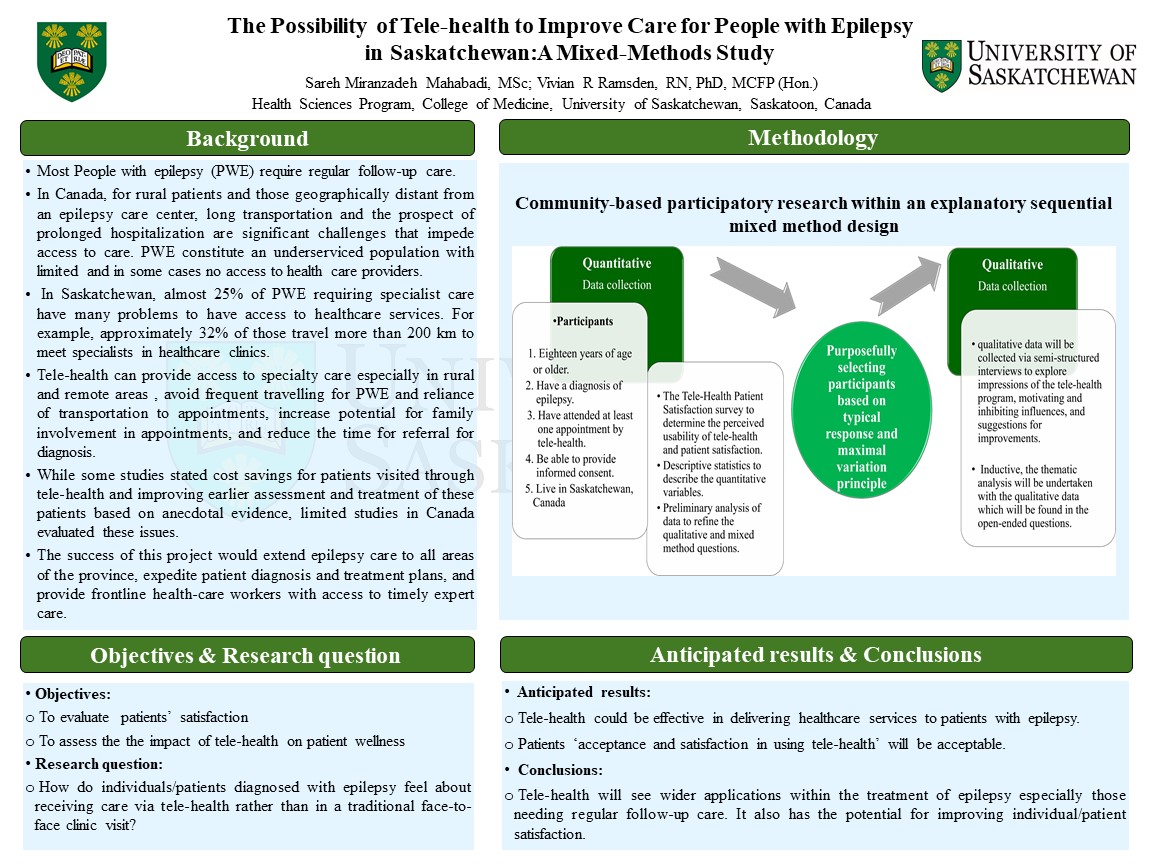SRFP032: Does Telehealth Improve Care for People with Epilepsy in Saskatchewan? A Mixed-Methods Study
Sareh Miranzadeh Mahabadi, MD, PhD; Vivian Ramsden, PhD, BSN, MS, RN, MCFP (Hon.)
Abstract
1. On completion of this session, participants should be able to describe the study design to be undertaken.
2. On completion of this session, participants should be able to identify how patient-oriented research was applied.
Context: People with epilepsy (PWE) require regular follow-up care. In Canada, patients who are geographically distant from an Epilepsy Care Center struggle with many transport barriers and challenges that impede access to care. Tele-health can offer the best chance to overcome geographic constraints, as well as a lack of mobility or affordability, in providing the necessary care for epilepsy patients. Research question: How do individuals/patients diagnosed with epilepsy feel about receiving care via tele-health rather than in a traditional face-to-face clinic visit? Study Design: This study will be undertaken using community-based participatory research within an explanatory sequential mixed method design commencing with the collection of quantitative data followed by the collection of qualitative data. Setting: Individuals/patients diagnosed with epilepsy living in Saskatchewan, Canada. Population Studied: Inclusion criteria are: eighteen years of age or older; a diagnosis of epilepsy; have attended at least one appointment by tele-health; be able to provide informed consent; and live in Saskatchewan, Canada. Instrument: The Tele-Health Patient Satisfaction Survey will be adapted with a Community Advisory Committee so that it meets the needs of the community but can also be compared/contrasted to data collected in similar situations. Anticipated Results: Tele-health could be effective at delivering healthcare services to the patients with epilepsy. Moreover, patients ‘acceptance and satisfaction in using tele-health’ will be acceptable. Conclusions: Tele-health will see wider applications within the treatment of epilepsy especially those needing regular follow-up care. It also has the potential for improving individual/patient satisfaction.

Viv Ramsden
viv.ramsden@usask.ca 11/21/2021Sareh, I am glad you were able to attend and present this work which has the potential to change practice.